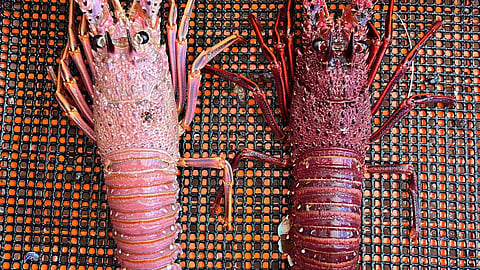Earlier start predicted for annual "whites run" of WA rock lobster
Scientists with the Western Australia Department of Primary Industries and Regional Development (DPIRD) are predicting the annual "‘whites run" of WA rock lobsters into deeper waters will start earlier this year.
The number of rock lobster on the move offshore is influenced by several factors including ocean temperature. The higher the temperature, the earlier and stronger the migration will be along WA’s west coast.
On the back of a very strong run last year, comparatively fewer will make the journey this year and DPIRD research shows water temperatures are about one degree Celsius warmer in the shallows, so the run is predicted to start earlier than normal from about November 20.
Every year, DPIRD scientists measure sample numbers of Western Rock Lobster (Panulirus cygnus) puerulus (baby lobsters) from ocean-based collectors at strategic locations along the West Coast.
DPIRD Principal Research Scientist Simon de Lestang said the tiny lobsters naturally settled onto floating seaweed around nearshore reefs, which helps them sneak past predators on their way to settling into crevices and holes within coastal reef systems.
“The number of puerulus measured four years earlier is the strongest influence on the whites run, which occurs when the three-and-a-half to four-year-old immature lobsters start to move out to deeper breeding areas,” Dr de Lestang added.
In the process, the lobsters moult from a red shell into a special light pink to whitish shell, helping them blend in more with the seafloor sand as they walk out to offshore grounds.
Dr Lestang said this journey to deeper water always attracted a lot of interest from fishers.
“This is a popular time of year for recreational fishers, because while the whites are walking, we estimate they are three times more catchable, hiding in pots during the day while they’re migrating,” he said.
“Commercial fishers also eagerly anticipate the whites run, because it generally coincides with the approaching festive season when seafood and especially rock lobsters are always popular choices.
“The annual migration of lobsters is expected to continue over January into February when Chinese New Year celebrations lift the demand for lobsters again. Commercial fishers can catch quite a lot of their quota during this time, sell it easily and maintain good prices.”


